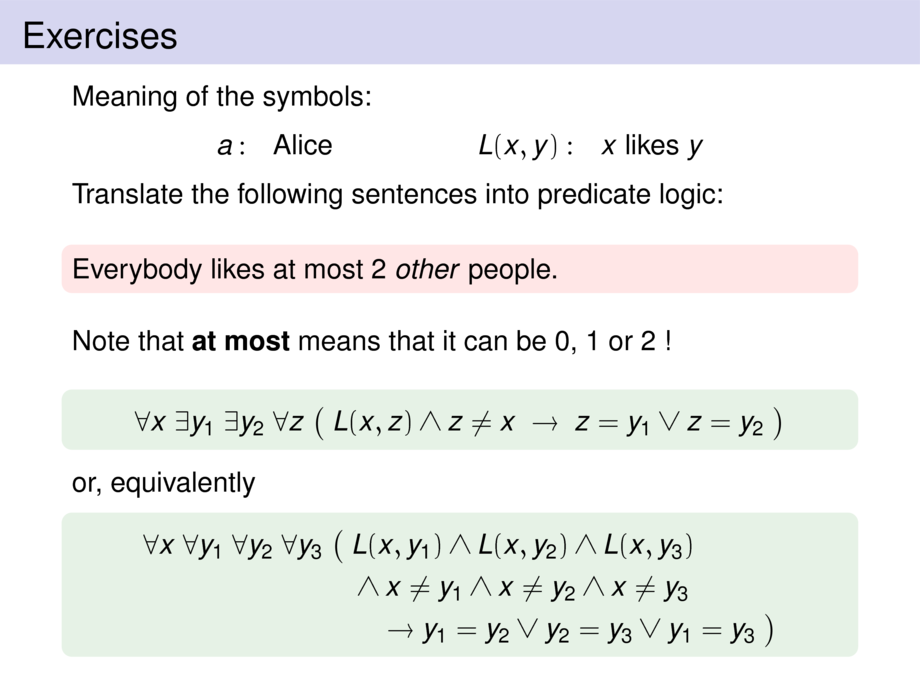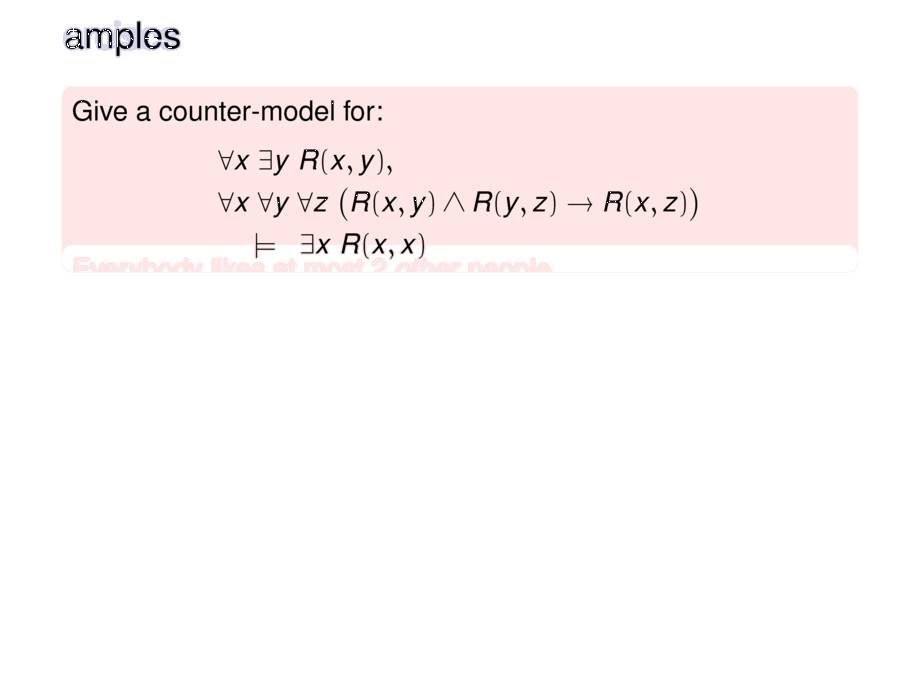



































































































58/70
\begin{frame}
\frametitle{Examples}
\begin{alertblock}{}
Give a counter-model for:
\begin{talign}
&\myall{x}{\myex{y}{ R(x,y)}}, \\
&\myall{x}{\myall{y}{\myall{z}{\big(R(x,y) \wedge R(y,z) \to R(x,z)\big)}}} \\
&\quad \models\;\; \myex{x}{R(x,x)}
\end{talign}
\end{alertblock}
\pause\bigskip
What do the premises it mean?
\begin{enumerate}[(a)]
\pause
\item Every object has a successor.
\pause
\item The successor-relation is transitive. \\\pause
Hence any $n$-step successor is an immediate successor.
\end{enumerate}
\pause
What does the conclusion mean?
\begin{itemize}
\pause
\item There is an object that is its own successor.
\end{itemize}
\pause\bigskip
\begin{alertblock}{}
Can there be finite counter-models?
\end{alertblock}
\pause
No, because by (a) there would by cycles, and by (b) every
element on a cycle would be its own successor.
\vspace{10cm}
\end{frame}

